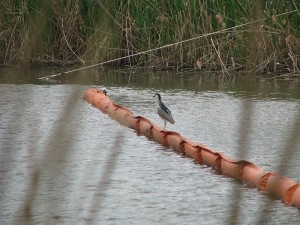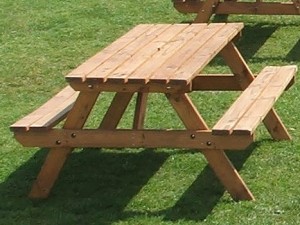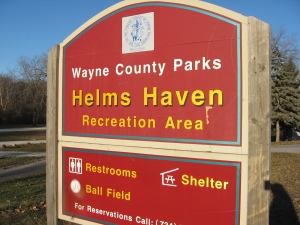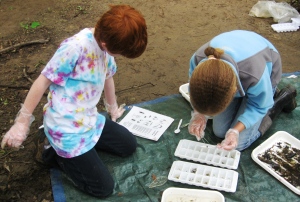Nowadays when we think about pollution in our waterways, people usually assume that pollution was intentional. But 40+ years ago, the contamination that Marine Pollution Control was called upon to clean up was the result of accidental oil and fuel spills into the river, mostly as a result of heavy shipping traffic in the navigable sections of the lower Rouge.
Industry has today become demonized, but the public forgets that the Industrial Age was an era where manufacturing companies were hard at work producing products that the public was demanding. Who can imagine life without the automobile? Cars and trucks had become essential to our way of life, and companies like Ford Motor Company grew in response to consumer demand. Vast amounts of raw materials were required to create the products and to power the manufacturing operations, and many of these materials were transported by large bulk ships. The rivers were busy with shipping traffic, and accidents happened occasionally. There were frequent rainbows floating on the water, and in most places you couldn’t see the bottom.
In 1967, Marine Pollution Control was launched as an oil spill response company when a call came in for the cleanup of an oil spill at the Ford Rouge Plant Turning Basin. Thousands of gallons of Number 5 heating oil had overflowed its storage tank, spilling onto the ground and then pouring into the river. Number 5 heating oil was used to run the plant at Ford Motor Company, it was used by ships to make their engines run, and it was also used to heat schools in Dearborn and Detroit. On the day of the spill, the Ford plant was not in operation. It was shut down because it had been the target of union negotiations. The accidental spill occurred when a worker fell asleep, and a 20,000-gallon storage tank overflowed into the river from the dockage area where the navigable section of the Rouge began.
The cleanup took 8 days and nights, and we were making history as to how to remove the oil from the water. Incidents like this taught us what kind of equipment and personnel was needed to respond to this type of emergency. MPC grew its fleet, its technology, and its response teams with a focus on water cleanup.
Prior to the Clean Water Act of 1970, the only Federal pollution prevention regulation in the U.S. was the Rivers and Harbors Act of 1899 (Refuse Act). It prohibited the dumping of waste into navigable waters and tributaries, and the U.S. Army Corps of Engineers were the only Federal responders. Usually, though, the individual ships and companies tried to clean up their own spills. The DNR was the only active State agency, and the DNR was in charge of overseeing the cleanups for spills they were aware of, and for determining when the cleanups were complete.
MPC had begun cleaning up oil spills before such cleanup became Federally mandated. When the Clean Water Act of 1970 (CWA) imposed Federal regulations requiring the Coast Guard to respond to spills, the Coast Guard turned to MPC for advice. Since MPC had pioneered oil spill cleanup methods, MPC then provided practical, hands-on training for Coast Guard personnel. A working relationship had been forged and cemented, and for more than 40 years we have worked together on oil spill response incidents, issues, and prevention.
In the 1960’s there was a list, published by the DNR, naming companies who had chemicals and oils that could potentially get into a stream. MPC contacted these companies and offered to remove their waste oil products for recycling or disposal. This was how MPC created its original customer base, by helping to keep many of these companies from accidentally contaminating the environment, and by cleaning up spills that happened.
Marine Pollution Control headquarters are located on Old Channel of the Rouge, where skimmer vessels are docked on the river, ready to go into action whenever called, 24/7/365. Our spill response equipment and technology allows us to clean up oil spills wherever they happen, and in almost any kind of environment. We also attend to ships and boats in distress, to prevent their oils and fuels from becoming a spill. “Lightering” is the process where we pump off fuels or oils from a ship in distress, and by safely removing the fuels and oils, we are able to remove the threat of a spill. Although the Rouge River is home to MPC, we’ve cleaned up spills and prevented spills all around the world.
In addition to protecting the Rouge River, MPC has located its pumping systems at 19 ports of tanker traffic in the contiguous U.S., Alaska, Hawaii, Puerto Rico, the United Kingdom, Singapore, and Hong Kong. Our equipment is at the ready for the emergency removal of liquid cargo that are considered pollutants. The most famous such lightering response was when we pumped off 40-million gallons of crude oil from the grounded supertanker Exxon Valdez into smaller tankers brought alongside the ship, preventing additional pollution from entering Prince William Sound, Alaska. We’ve performed lightering operations as far from home as Antarctica, and were involved in the cleanup of oil in the Persian Gulf during “Desert Storm.”
When my partner, Bert Piggott, and I first began in the oil spill cleanup business as Marine Pollution Control, there was virtually no one else doing what we were doing, and MPC had no competition. Today, there are many environmental companies performing cleanup, and the environment is cleaner as a result of these combined efforts. We all need to do our share, and people at every level of society are in a position to help and to make a difference. Cleanup, prevention, activism, and education all make a difference. With today’s understanding of the problems caused by pollution, and with dedicated, determined people such as Friends of the Rouge working to prevent pollution and to improve water quality, Industry has become more aware of their role and responsibility not to pollute. Progress can be seen where the waterways are becoming cleaner, ecosystems are becoming healthier, and the overall environment is improving.
Congratulations to Friends of the Rouge and its many fellow environmental stewards on 25 years of involvement and progress.








